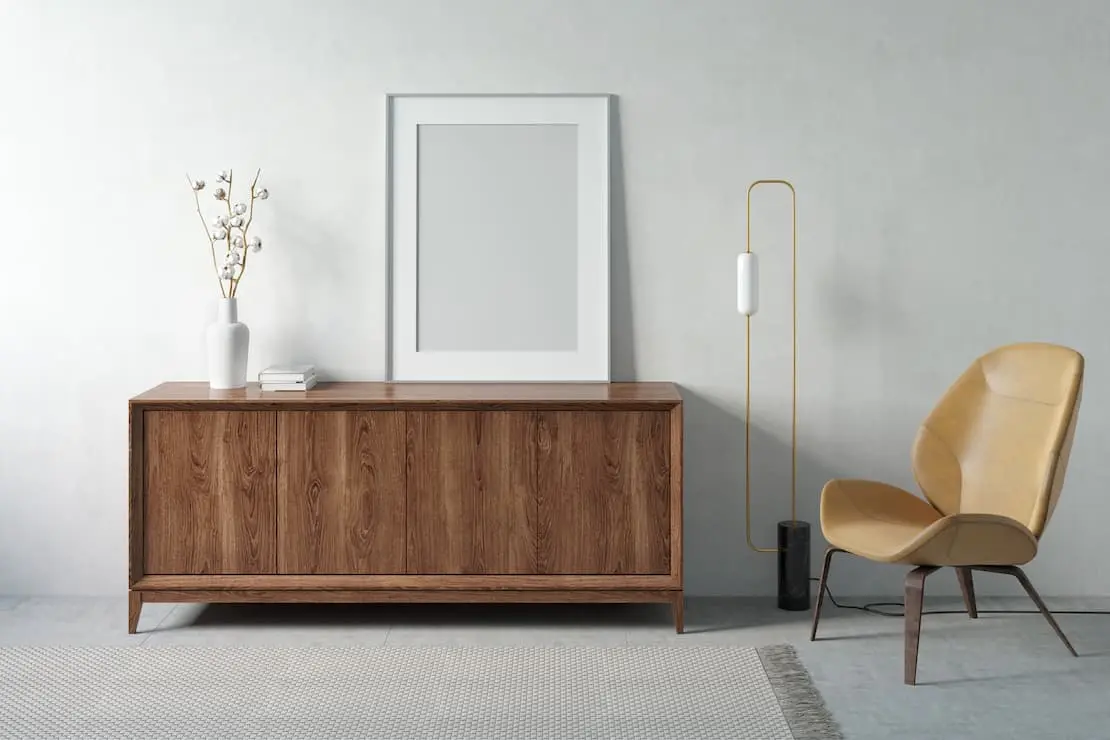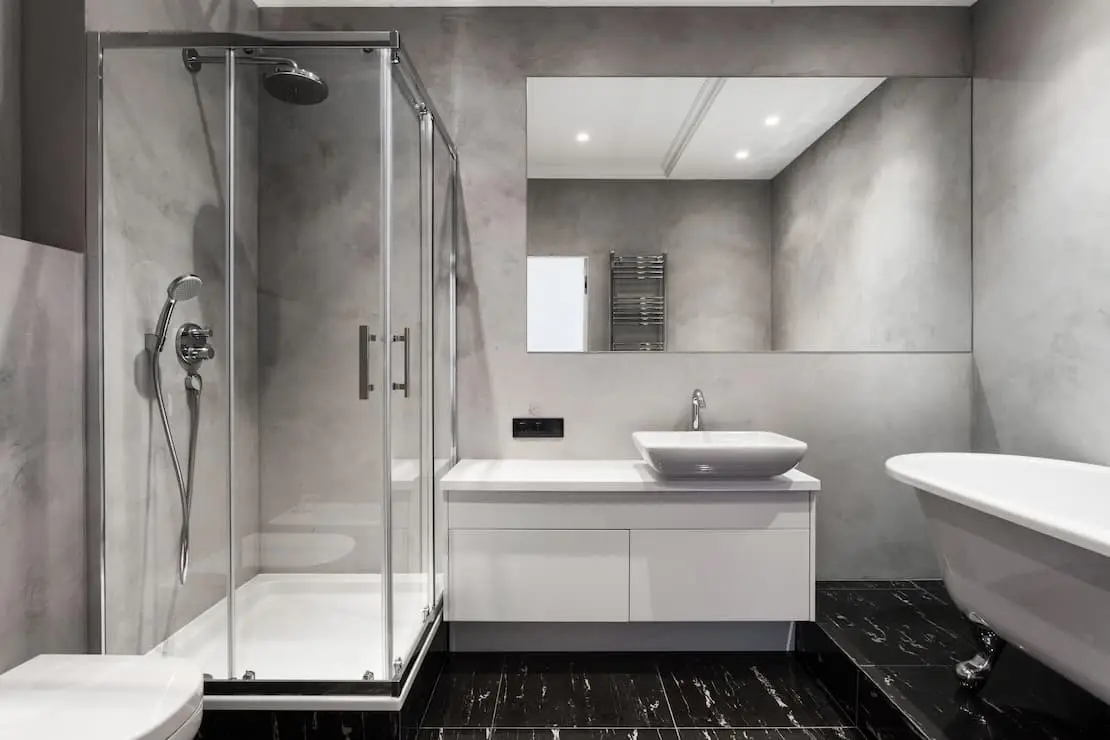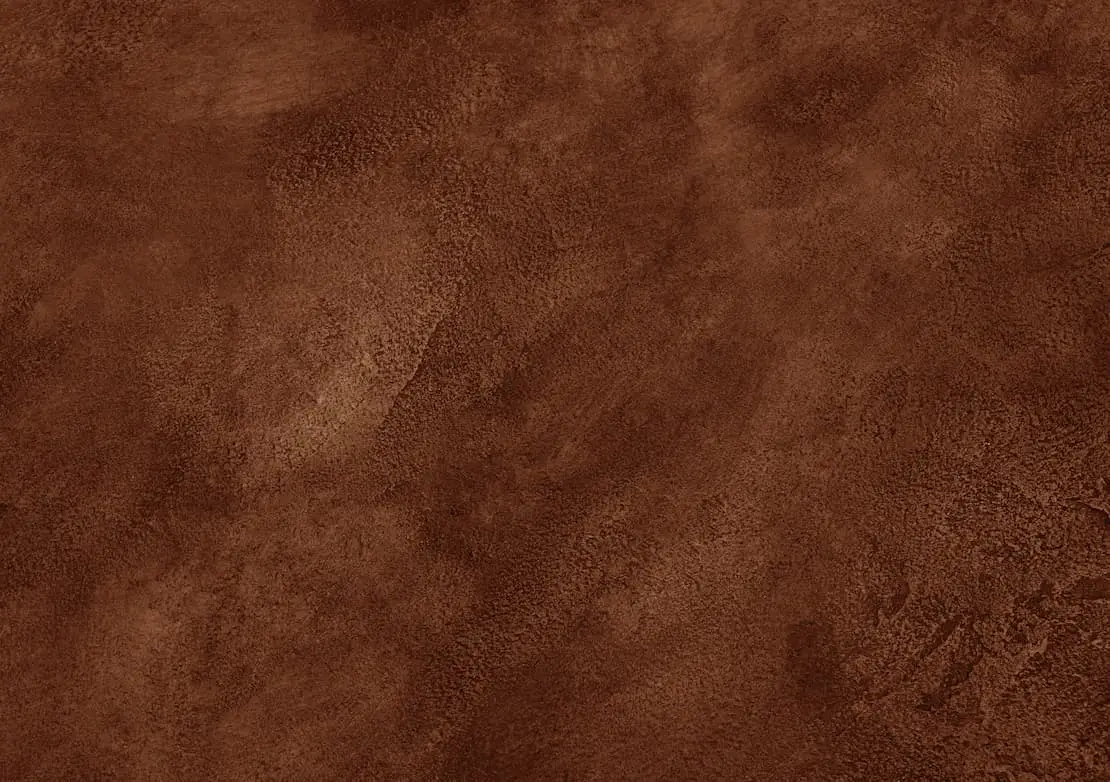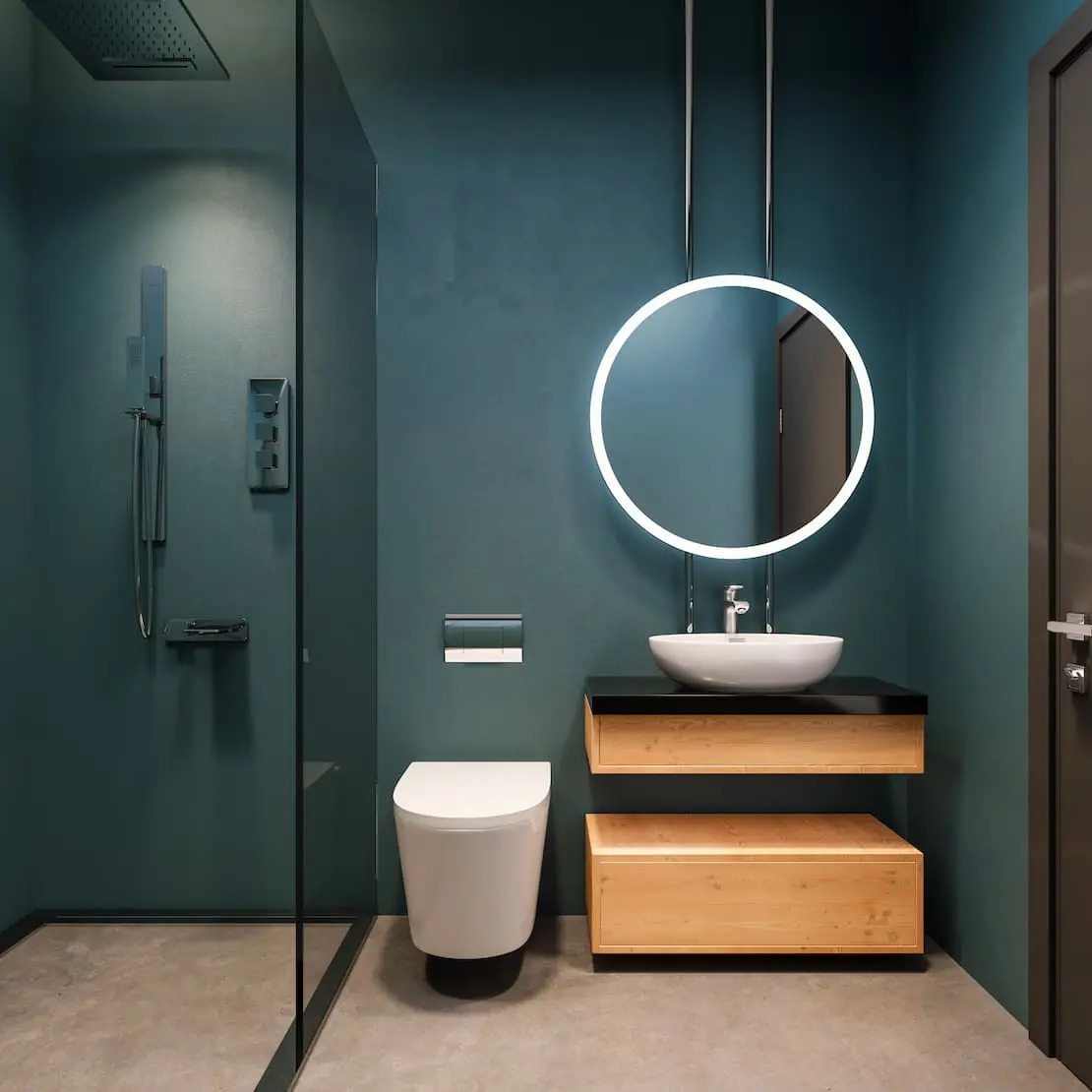Microcement colors: tips for a successful choice
In microcement we find a decorative material that stands out for its high technical qualities as well as offering the professional a wide range of creative possibilities thanks to its extensive, almost infinite, range of colors.
A coating is without a doubt, one of the strongest trends in the decoration scene. Such is its wide versatility when working with this product, that in this article we are going to teach tricks to identify the most efficient way to get the most out of your surfaces with microcement colors, as well as we will show the colors that are trend-setting. Grab a pen and paper because we are sure this will interest you.

Microcement colors do not start and end in black and white
It happens to us when choosing our wardrobe, the color of the car and, basically, in our day to day. We tend to lean towards easy and safe options, such as black and white, two colors with which we know that success is assured, but are they always the most suitable option? There will be cases that yes and others not so much, and it is at this point where we want to open your eyes and show you that there are options that will be more appropriate in certain cases.
The microcement has the advantage of offering an infinity of shades, a characteristic which benefits in obtaining more specific results that meet the most demanding needs and provide completely customized finishes. Just consider the context of the renovation, take into account certain aspects that will define the path to finally choose a color that is consistent with the rest of the room.
In the following section, we teach you the tricks by which interior design specialists guide themselves to make a coherent choice of microcement color, always ensuring user satisfaction through truly artistic finishes.
Considerations to ensure a successful choice of microcement color
As we have previously mentioned, the color of our surfaces is important not to fall into custom through a vague decision and for that it is important to know the 4 key factors that will indicate what colors of microcement to use and in what proportions, all with the aim of getting the most out of our spaces and creating pleasant environments where a greater balance and harmony between the elements is appreciated.
Color, even though it is one of the last steps in renovation, is one of the major contributors to the success of your decorative makeover. Its presence can serve as a thread with the rest of the elements and if chosen well, can give life and freshness to a space that was initially considered boring and uninteresting.

Golden rule in decoration: 60 / 30 / 10
Did you know it? Top professionals in decoration commonly use it for choosing the color of the rooms. This rule basically describes how to distribute the presence of colors in space, giving 60% relevance to the base color, 30% to the complementary one, and 10% to a color to emphasis the accent. In this way, this theory recommends the use of a maximum of three colors, however, there can be exceptions.
The base is usually a neutral color like white, beige, gray... as they will not overload the space with their presence. In the case of the complement, it tends to lean towards using more intense colors or a darker tone as a contrast to the first. Finally, the accent will be made through a very intense color, its use should be in small proportions to ensure an environment where the known "visual stress" is not generated.
Light: fundamental role in the color of microcement
If up to this point you had not valued it, it is time for you to know that light directly influences the choice of microcement color, so that those rooms that enjoy a good amount of natural light, can tend to use darker colors, however, if the opposite is true, it is recommended to apply light tones that help to generate better lighting of the room in order to guarantee a sense of distress.
Natural light is vital in decoration, but artificial light has an equally fundamental role, especially for those who do not have the fortune of having sources of natural light. The type of bulb, the color and the intensity, will directly influence the appearance of the room. It is not the same a white light that will generate colder environments, than yellow light, creating a warmer and more welcoming sensation.
Dimensions do matter
A classic in interior design, light colors create a sense of greater amplitude while dark ones will do the opposite, reducing the space visually. In this way, taking into account the dimensions of the space to be renovated is totally essential for the choice of microcement color.
White or neutral colored surfaces will create amplitude. These colors create visual relief and help to satisfactorily reflect light, so in rooms that are smaller it is recommended to tend to use these kinds of colors in them.
Choose a microcement color that matches the room
The decoration of a living room is not the same as that of a bathroom. Each space has a function and color is essential to fulfill this task. When talking about lounges, the aim is to create a calm and harmonious environment that invites you to spend hours in it, so its decoration is usually done through neutral colors and a contrast with other soft colors that emanate peace.
In the case of bathrooms or kitchens, whites are usually the main protagonists and often go hand in hand with other more intense colors, but in very small proportions.
On the other hand, a totally different example is usually children's bedrooms. These are usually decorated with intense colors in order to create spaces that convey more vitality.
In the case of other more professional environments such as factories, leisure shops, hotels, etc. The use of color will vary completely. The key is to think about the purpose of the space and choose a color in line with it.
Most demanded microcement colors by experts
While it is true that the range of colors in microcement could be considered almost infinite, there are 5 that are setting the trend in the decorative scene, generating environments with really attractive and modern finishes, which are proving to be a real success wherever they are used.
Next, we will show which are the colors chosen par excellence and we will detail the most optimal way to make good use of them in decorating your surfaces:

White
White microcement could be said to be, among all the colors of microcement, the jewel in the crown. Its presence always makes a good impression, creating spaces of great amplitude, with good lighting and, above all, timeless and combining perfectly with all other existing colors. The exact image of purity and neatness, which makes it the perfect color, one could say for any room.
Although at first glance it may seem like a flat and simple color, its variety of shades is surprising and can be much more creative than you might think. From an intense snow-white look to more neutral ones such as off-white capable of generating spaces with their own personality.
Such is its potential that it shines radiantly whatever the surface: living rooms, bedrooms, bathrooms, kitchens, hallways, facades and even swimming pools.
You choose the type of ambiance with white microcement, being able to vary from a warmer tone in the company of natural elements like raffia, wood, wicker and yellow lighting. On the other hand, if you prefer, you can opt for a somewhat colder and more intense setting, perfect for bathrooms, in order to awaken your senses.
Black
Are you in favor of creating an environment with elegance and exclusivity? With black, excellence is served. A color with strong character that, if used in the right proportions, allows to add the perfect sophisticated touch wherever it is applied.
Black color in microcement creates a strong presence, therefore, if its use is excessive it can be counterproductive, creating a feeling of overwhelm and removing light from the environment. It is recommended to use it in the right measure, as for example on a high black wall in contrast with the rest in neutral colors and good lighting.
Black décor on the floor is also an interesting option, however, you will have to balance the roles of the rest of the elements very well to achieve harmony between them all.
Sand
An exclusive color with which to bring naturalness to the room. This is one of the neutral tones par excellence and with the rise of naturalist styles in interior design, several interior designers are including it in their decorations as the main piece.
Rooms shine with a unique freshness, giving them more liveliness that, in combination with other natural elements, is able to create a relaxing and soothing atmosphere.
We recommend combining it with plants, colors, whites and terracotta. Wood also works efficiently, managing to turn your home into the perfect place to escape from the daily hustle and enter a climate of peace.
Olive green
The microcement in olive green has become a winner in the panorama of interior decoration. Continuing with the same dynamic of naturalness, styles such as boho are among the main drivers of its increased use.
This is a pastel color that due to its soft intensity looks great with almost any other tone that is presented.
There are other options in pastel colors that have also seen their demand increase significantly, such as pale pink, blues and even yellows in some cases.
Gray
If you're interested in a color that adapts to any context, you'll find a versatile bet in gray, which works perfectly on floors, walls, stairs, and ceilings, as well as on exterior and interior surfaces. A tone that offers a great capacity to reflect light, serving to create an interesting sensation of clarity and thus enhancing a more diaphanous style.
Gray microcement has the property of being able to combine with itself in different tones, in order to create contrasted and deep environments, as well as generating an attractive sensation of dynamism.
Unlimited colors in our MyRevest catalog

As specialists in microcement, we had to offer a complete and almost unlimited color catalog, in order to favor our customers' desires.
Our main driver to keep improving is to achieve even greater satisfaction with the quality and high customization of our products and, in this specific case, our microcement colors.
We have up to 3 different color charts, for bicomponents and monocomponents, for ready-to-use microcements and for epoxy microcement. Find your color par excellence, the one you have always wished to express in your decorative renovation. Now, with MyRevest, finishes are totally exclusive.